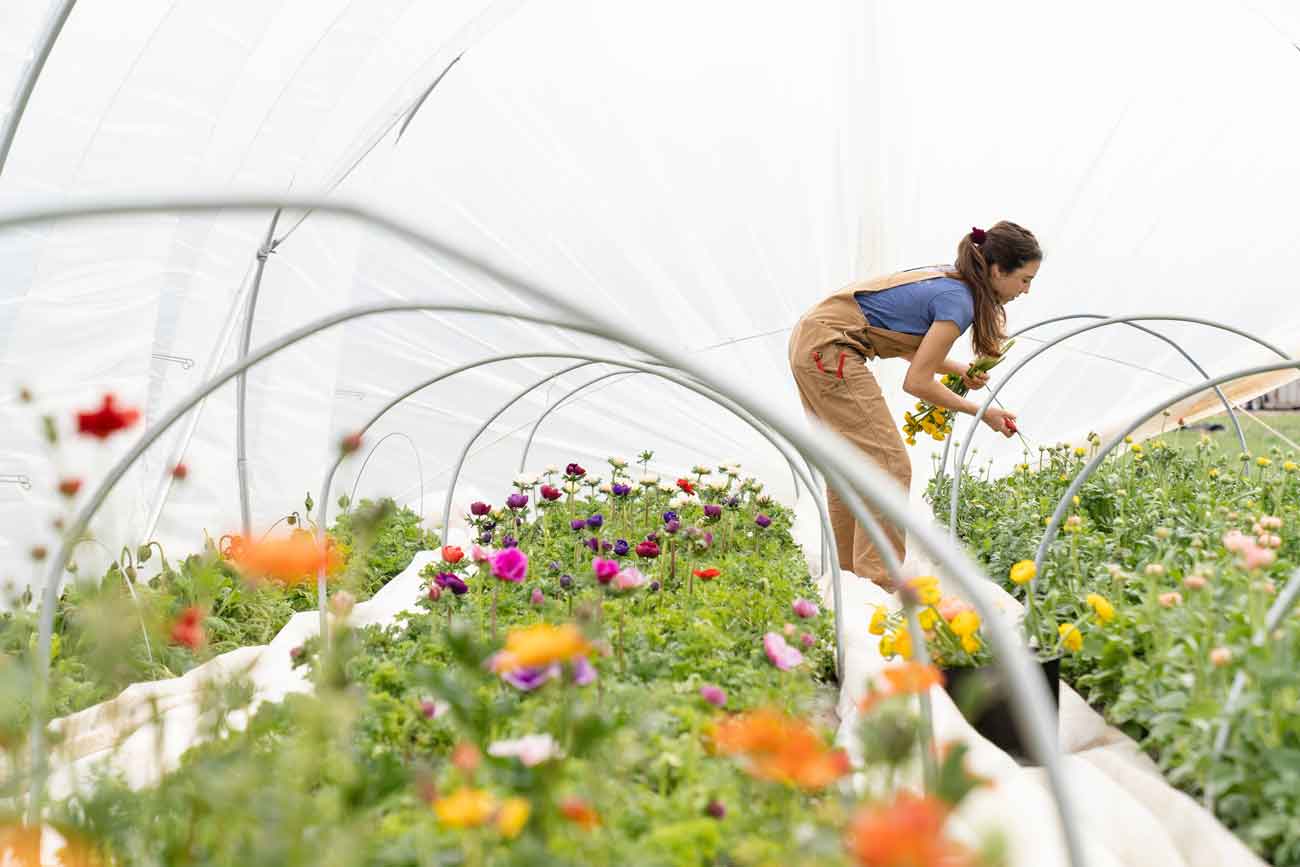Regenerative Agriculture: A New Frontier For Food And Fashion
Regenerative Agriculture is a type of farming that prioritizes practices that can curb carbon emissions and tackle climate change by regenerating and revitalizing degraded soil and restoring biodiversity.
This approach also impacts communities positively as it preserves traditional knowledge, boosts local economies, and provides people with better, more nutrient-dense food. Here we explore the ins and outs of regenerative agriculture, its many perks, and how it can change the way we grow food and fabrics.
INDUSTRIALIZED AGRICULTURE AND ITS CONSEQUENCES
The history of agriculture has begun thousands of years ago. During these centuries, farmers have worked relentlessly to improve and modernize their farming techniques, select the species and varieties that better suited their land, and find ways to protect their harvest from pests and diseases. With the Industrial Revolution came steam-powered plows, later replaced by internal-combustion-powered tractors. As technological progress matched one, farmers began to have access to more and more tools that made industrialized agriculture a reality, like mineral pesticides and fertilizers.
For decades, these products have been preventing crop losses and increasing productivity, but these improvements came with a cost. Between 1961 and 2002, the world's mineral fertilizers' production has increased by almost 350%, which led to environmental issues such as the contamination of surface and groundwater resources, an increase in greenhouse gas emissions, and soil acidification. Industrial agriculture and the products that make it possible also threaten soil biodiversity, compromising its functioning. Healthy soil is key for efficient food production and the delivery of many ecosystem services, including carbon-storing and water-storing.
A study analyzed the biodiversity in soil food webs from grasslands and extensive and intensive rotations in the Czech Republic, Greece, Sweden, and the UK. They found out that intensive agriculture's impact on soil biodiversity was consistent. Even though the examined areas have different climate and soil conditions, agricultural intensification has simplified their soil food web diversity. Pesticide exposure is also considered one of the top factors compromising pollinators' health, resulting in the decline of pollinators' populations. That is terrible news for humans, considering that animals pollinate approximately 87.5% of all flowering plant species, and 35% of the global human food production is made up of crops that are at least partially pollinated by animals.
Industrial agriculture is also partly responsible for the loss of thousands of local, traditional edible plant species and varieties. According to the Food and Agriculture Organization of the United Nations, between 1900 and 2000, our planet lost 75% of its crop biodiversity. During the last few decades, a series of high yielding varieties of cotton, corn, potato, rice, soybean, and wheat has been favored over local products, which had a better residence to their homeland's weather and soil characteristics, and were an intrinsic part of their native environment. Over time, this policy has impoverished ecosystems and communities, depriving them of their traditional crops and all the knowledge, jobs, and traditions that came with them.

DOING THINGS DIFFERENTLY: A REGENERATIVE APPROACH
Given the grim portrait we have painted so far, it may seem like there is no alternative, no going back. On the contrary, many farmers are going back to a kind of agriculture that respects the land and doesn't just use it. Regenerative agriculture focuses on improving the water cycle, regenerating the topsoil, and increasing biodiversity. This approach's benefits are numerous: one of them is the possibility of feeding more people while utilizing less land. The International non-profit organization Grain has analyzed this phenomenon in their report "Hungry for land: small farmers feed the world with less than a quarter of all farmland." They explored the so-called productivity paradox, a term used to refer to the inverse relationship between the size of a farm and its productivity, which is exemplified by the fact that in 20 EU countries, small farms register a higher rate of production per hectare than the large ones. Another benefit of regenerative agriculture is its respect for biodiversity and its usage of biodiversity-enhancing farming methods like ecological pest and soil management. By choosing regenerative agriculture, we can also ensure food security. That's because the production of the foods we directly consume depends on a plethora of other species and their ecosystem's health.
REGENERATIVE AGRICULTURE AS NEW FRONTIER FOR FASHION
Food production isn't the only application for regenerative agriculture. Fashion too can take on this approach by utilizing natural materials produced using regenerative agriculture criteria. Regenerative agriculture has been quite the buzzword lately in the sustainable fashion realm. It was one of the topics of discussion at the 9th Future Fabrics Expo Seminar Series and many brands like California Cloth Foundry are now opting for regenerative sourcing solutions. Oshadi Collective is one of the biggest names in this particular field. They built a regenerative sew-to-sew supply chain in Tamil Nadu, India. Aside from their own collection, they make pieces for other sustainable brands like Christy Dawn and Solai.

+ Words: Roberta Fabbrocino
Roberta Fabbrocino is a writer and an environmentalist who loves sharing stories about all things sustainability. She runs @mosclothingsubscription, an eco-friendly personal styling service, and creates content for green brands.
Instagram: @naturallybree




